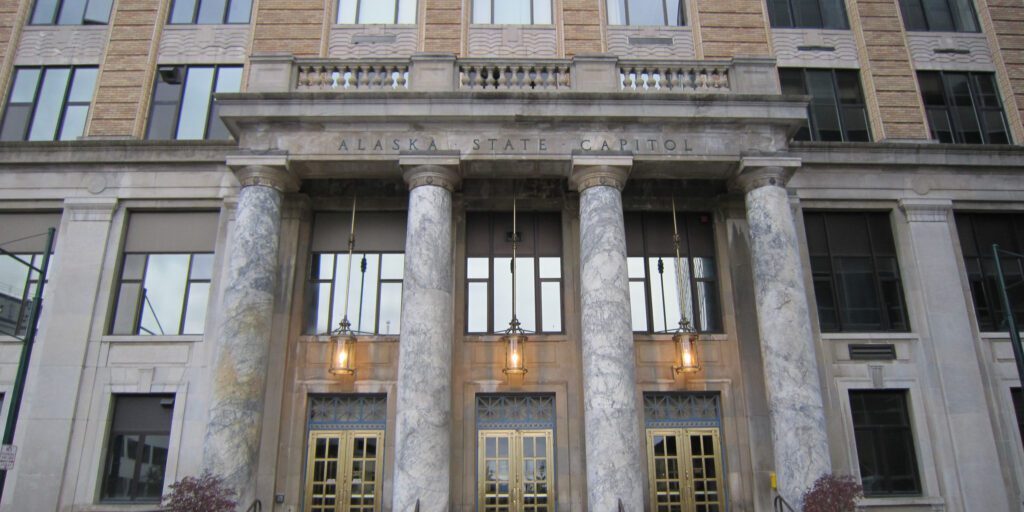With a look to increasing education funding in the state, a pair of bills in the legislature aim to raise the Base Student Allocation. Passage of either bill would have implications for schools in the Bering Strait region.
The Base Student Allocation, or BSA, is the amount that the State of Alaska pays districts for each student, based on attendance. The BSA is an amount set in statute and cannot be changed in the legislature’s budget process.
Currently, the BSA is $5,960 per student. Senate Bill 52, introduced by the Senate Education Committee, would increase that amount by $1,000 per student. A similar bill in the House of Representatives, House Bill 65, has been filed by Rep. Dan Ortiz of Ketchikan. The House bill calls for an increase of $1,250.
If approved, SB52 would increase the aid Nome Public School District receives from the state to $1.72 million. HB65 would increase that aid to $2.15 million.
Jamie Burgess is the superintendent of Nome Public Schools. She explained how the district calculates funding from the BSA.
“The formula takes the Base Student allocation, and it multiplies it by the number of students in the district during what’s called our count periods,” Burgess said. “For us, that’s 20 days in October, and they look at how many students are enrolled during that count period.”
Burgess added that if the BSA is not increased for next year, Nome School District would end up spending from its undesignated fund balance — the district’s rainy-day fund.
“Next year we’re projected, if nothing changes, to spend it down lower than it ever has been in about the last 10 to 12 years,” Burgess added.
If $1,000 is added to the BSA for each student under HB65, that would amount to $10.65 million in projected state aid to NSD. Senate Bill 52 would increase aid to just more than $11 million.
In addition to paying for inflation and rising fuel costs to heat district buildings, Burgess explained that NPS would use the BSA funding to add a cultural education position, which the administration and school board believe is vitally important.
“It’s very important for the board that we have culturally responsive curriculum for our students,” Burgess said. “It’s been a long topic of discussion for many years. We currently don’t have anybody employed by the district in an administrative capacity that has the time or necessarily the knowledge to spend working with all the different teachers for both of our schools.”
Rep. Ortiz said he filed HB65 to see some forward motion on attempting to increase school funding.
“I mainly put that bill out there because nothing had been put forward on the House side in relation to an increase in BSA,” Ortiz said. “About two weeks ago, when the Senate had those hearings on their version of BSA increase, there was quite a bit of input that was coming in from around the state, a lot of activity in the building. And I realized that nothing was going on (with) the issue in relationship to the House side.”
Ortiz added that he sees his bill as a companion of sorts with SB52 — and that he is hopeful one of the two proposals passes.
Nome Rep. Neal Foster says either of the bills would be good for Nome and the Bering Strait School District.
“I support both bills,” Foster said. “We’ll be able to attract and retain good teachers both in Nome and in our surrounding villages.”
Foster echoed the sentiments of superintendent Burgess when it comes to what a higher BSA can accomplish in the region.
“It’ll help us to keep up with the rising costs of everything, due to inflation,” Foster said. “For example, the cost of heating our classrooms and the cost of health care, that’s just been skyrocketing. It will mean that we can help to get more teacher housing in our communities. It will help support our programs like sports and travel for basketball.”
One major project that needs addressing is to fix a leaking roof at Nome-Beltz High School, Foster said.
“It just has so many leaks on that roof, and typically roof replacement comes out of what’s called a school major maintenance program,” Foster said. “But, because the funding hasn’t come through for that it means that they’re having to do Band Aid fixes, which comes out of the daily operating funds.
the University of Alaska’s Institute of Social and Economic Research found that Alaska spent less per pupil on public education than the national average in 2019, when spending was adjusted for inflation and indexed to the cost of living, according to the Senate Education Committee’s sponsor statement for SB 52.
From 2012 to 2022, Alaska’s urban consumer price index increased by 24.6 percent while Alaska’s base student allocation increased by only 4.2 percent.
Both bills have been referred to the education committees in the House and Senate.
Image at top: The Alaska State Capitol in Juneau. Photo by Neal Jennings.




